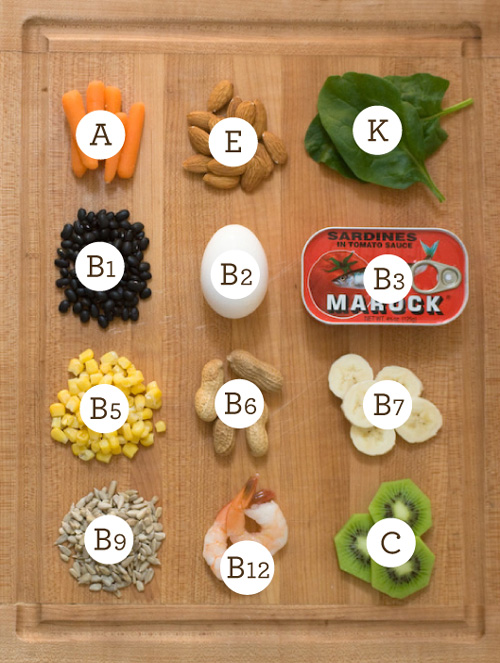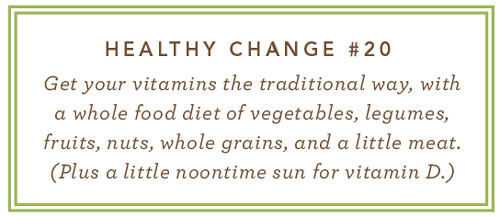Menu for Week #23
Nutrition Paradoxes
You find crazy contradictions in nutrition that, if further examined, can teach us how to live. Have you heard of the French Paradox? The French have more than their share of dining pleasure; they enjoy buttery sauces full of the saturated fats we’ve been taught to avoid for the sake of our hearts. Perversely, they have much less heart disease than we do. More butter, less heart disease—that’s a paradox worth examining.
Then there’s the Israeli Paradox. In Israel they avoid the buttery fats for religious reasons. Instead of saturated fats, they cook with margarine and refined vegetable oils—usually hydrogenated—that for years we were also told to use. Unfortunately, as opposed to the French, the Jewish citizens of Israel have relatively high rates of heart disease.
The French enjoy traditional fats and have little heart disease—for the Israelis, it’s the opposite. They eat modern fats and suffer from heart disease. This is a complex subject but I feel comfortable eating traditional fats and avoiding modern refined oils. The Israelis should have stuck with olive oil.
The Calcium Paradox
We’ve been told that calcium is good for our bones. Americans eat lots more calcium—in dairy products, pills, and plant foods—than most other nations. Until recently, the beautiful wife’s OB-GYN was pushing her to take calcium pills. Despite high calcium intake, we have higher rates of osteoporosis. Worse yet, it’s not just older women. There’s something wrong with the solutions being sold to us.
Here’s the flip side of osteoporosis: People with osteoporosis also usually have a problem called calcification. Calcification is when your body deposits calcium in the wrong place—in your soft tissue, instead of your bones. You know about the painful problem of kidney stones and gallstones, but calcium is also part of the plaque that coats and blocks your coronary arteries. We call that atherosclerosis and it’s a giant problem.
Plaque, it’s reported, consistently contains about 20% calcium, causing the arteries to not only narrow, but to harden and lose flexibility. Calcification is also a primary cause of heart valve replacement.
Because heart disease is the #1 cause of premature death in America, shouldn’t reducing calcium-related atherosclerosis be our #1 health priority?
Vitamin K2
I just read the book, Vitamin K2 and the Calcium Paradox. The book presents information about why our bodies are putting calcium in the wrong place—in our plaque instead of in our bones. Here’s a brief summary of what I learned:
- Bones need minerals like calcium, phosphorous, and magnesium. Because of the modern diet of refined, processed foods, we generally get too much phosphorous and too little magnesium. So that’s one problem.
- About everybody knows that vitamin D is important to bone health—it plays a role in building strong bones. We’ve talked about this here and here. Most people don’t get enough natural vitamin D so that’s a problem too.
- Few of us know that vitamin K2 is needed for strong bones—it’s critical to getting the calcium into bone, rather than in our soft tissue. Basically, K2 is involved in calcium deposition, and its predecessor vitamin K1 is needed for blood clotting. They’re related, but play different roles.
- We get K2 from animal products—eggs, butter, cheese, liver, and meat. The animals get K1 from eating green grass, and bacteria in the animal convert K1 to K2. So products from pastured animals provide us with K2.
- Since the ‘50s, the vitamin K2 content of the American diet has steadily declined because we’ve moved animals from the green pastures into CAFOs (confined animal feeding operations, like feed lots, large hen houses, etc.). In CAFOs, animals eat grains, industrial waste products, and dried hay but little green grass. As a result, their level—and our level—of K2 has steadily declined and, consequently, calcification and osteoporosis have increased.
The bottom line: We need more and better science here, but the author’s conclusion is that our health depends on the health of the animals we eat, and the animal’s health requires a traditional diet rich in green grass. The book of Genesis tells how God gave man dominion over the animals. Now, it seems more a partnership—our health depends on how we exercise that dominion.
My goal is to develop sources of pastured milk, eggs, cheese, and meat for our family and to share this information with you. In the meantime, the author suggests supplementing with vitamin K2 pills. Eventually we’ll get better guidance from the medical profession on bone health, but based on a recent conversation, that’s a few years away. This seems a critical subject that we should return to in future posts.
This Week’s Menu
Monday—Mostly Sunday’s leftovers but a healthy meal.
- Roast pork tenderloin.
- Asparagus
- Roasted potato slices
- Green salad
Tuesday
- Artichoke—it was the first of the season and though we steamed it for an hour it never got soft. Why do some artichokes not cook well?
- Cauliflower—roasted with cheese sauce.
Wednesday—We had two young men for dinner guests so thawed the last of the pork roast.
- Roast pork tenderloin.
- Boiled potatoes with gravy.
- Salad
- Banana Bread
Thursday
- Stuffed bell pepper—I had the stuffing left over from last week. The beautiful wife was suspicious of bacterial growth and declined the treat. We have differing views on bacteria in food; I enjoyed her half.
- Salad
Sunday—Our son and his beautiful wife are remodeling their kitchen so we had guests.
- Chuck roast
- Potatoes, onion, and carrots, baked with the roast.
- Corn
- Green salad
- Apple

 Monday, June 11, 2012 at 11:36AM
Monday, June 11, 2012 at 11:36AM












